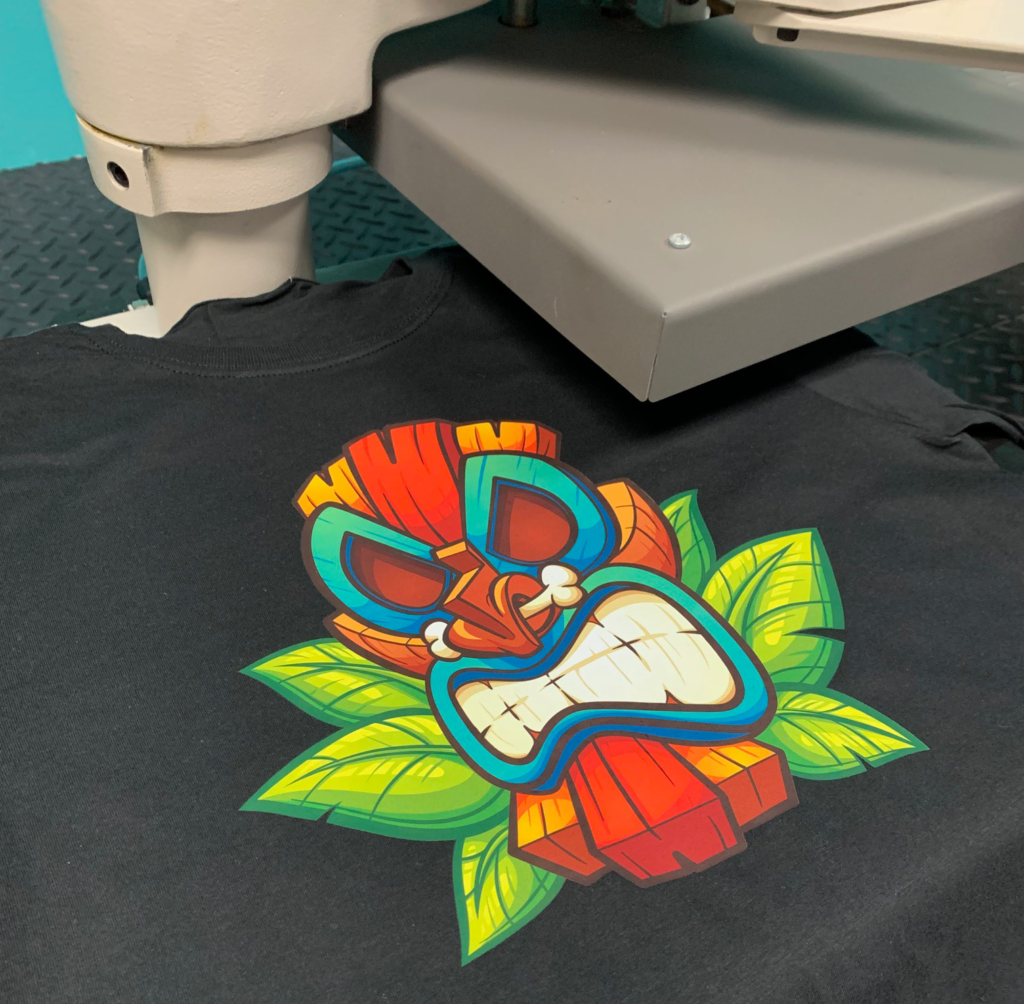
Like many of you, the Insta team has been following the evolution of Direct to Film printing, aka “DTF”. Direct to Film was born out of Direct to Garment printing and some of the earliest DTF printers where actually modified DTG printers. So what exactly is DTF? Why is this technology developing so quickly? And what’s important to know when incorporating DTF as part of your business?
DTF Printing is when a heat transfer is created by printing onto sheets or rolls of film which are then backed by a powdered or printed adhesive and cured in a dryer. The printers range from small desktop models that print on single sheets of film to large roll-to-roll machines that incorporate built in powder shakers and dryers. Many of the original DTF printers were altered DTG machines or made custom by DTF pioneers. There are still a number of sellers offering these kinds of machines, but there are also companies starting to manufacture printers made specifically for DTF.
You may be hearing more and more about DTF as the technology improves and becomes main stream. Like any new technology, there are some challenges involved with DTF, but first, let’s talk about the benefits that are so exciting to many of us in the transfer industry.
DTF machines can create custom transfers efficiently in very small quantities, but they are also fast enough to print a high volume of transfers in a short amount of time. Compared with traditional screen printed transfers, the setup time for DTF is almost non-existent. Imagine having a job that required printing 2,000 custom transfers where each individual transfer was its own unique design. This would be completely unfeasible with a traditionally printed transfer. With DTF, this job (other than the artwork design phase) would not take much longer to print than a job for 2,000 transfers of the exact same design. This level of customization is unprecedented, and it is allowing shops to take on jobs that, in the past, would have been unprofitable. DTF is also allowing shops to print on demand for their customers. There always seems to be a need for on demand options, but for traditionally printed transfers, it is not always easy or cost effective to offer it.
In addition to the efficiency and level of customization available from DTF, the transfers made are also versatile. These transfers can be applied to numerous types of substrates and materials. The manufacturers of these printers are also experimenting with inks in order to expand this versatility and increase the durability and opacity of the finished product. Some manufacturers are predicting that DTF can surpass screen-printed transfer quality within the next few years. This versatility and the lack of pre-treatment of garments needed, is one reason DTF may soon beat out DTG in popularity.
If you’re ready to take the leap and invest into a DTF system of your own, there are some things to consider. In order to achieve high-quality, consistent results, a tremendous amount of R&D is required. The videos posted online show DTF machines churning out transfers that are immediately ready to press onto apparel and products. What these videos don’t necessarily talk about are the hundreds of hours of testing that go into honing the settings on the printer, getting the powdered or printed adhesive just right, building a room that keeps the machine at the ideal temperature/humidity, and maintaining the machine and print heads. Investing in a DTF machine most likely means building a controlled environment for it and hiring multiple people to maintain and operate it. And lastly, not all DTF systems are equal. Even some of the most reputable DTF companies don’t have a solid system in place to service and fix the machines when they break down. This is getting better every day as dealers implement and train their techs, but it is something to keep in mind before making a purchase.
The great thing about DTF is that you don’t have to have your own setup to reap the benefits of the technology. There are plenty of shops that have taken the time to build controlled rooms, hire operators, and optimize their processes and materials. You can order your DTF transfers from companies like this, and still get those 2,000 unique transfers we mentioned above. Going this route, there isn’t a lot you’d need to change about your own setup. Just like with traditional transfers, one of the most important aspects of customization is your heat press machine. You can order the best DTF or screen printed transfers in the world, but if you have uneven pressure or cold spots on your heat press, your final product will suffer.
This is where Insta comes in! We provide the highest-quality heat presses on the market, and help you understand DTF heat press settings, so you get consistently phenomenal results. Contact us today to learn more.
